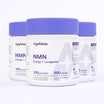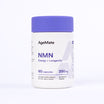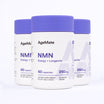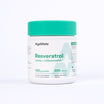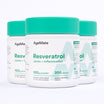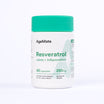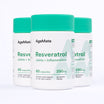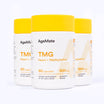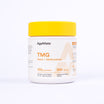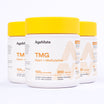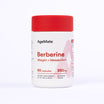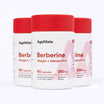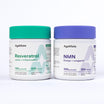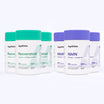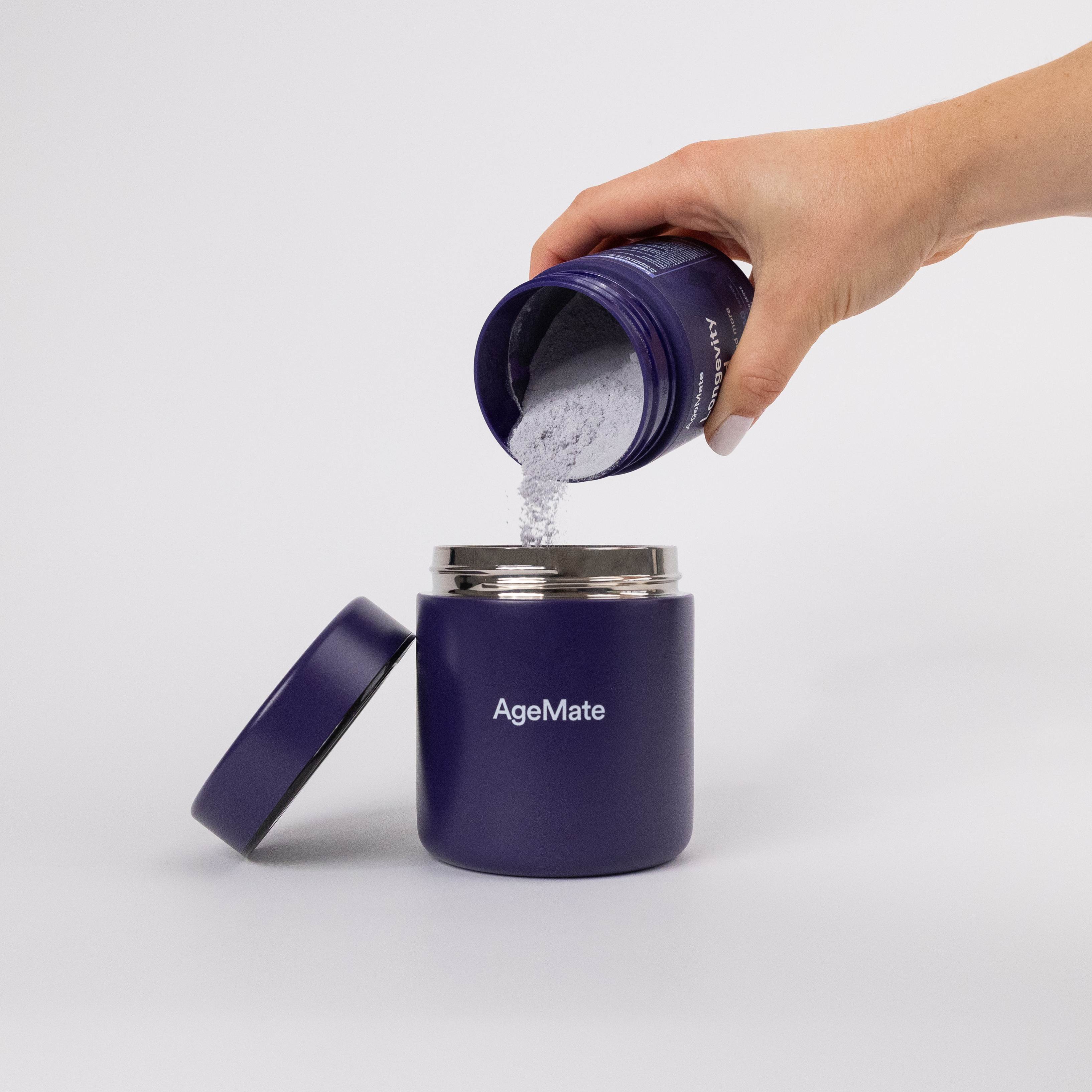Nicotinamide Riboside (NR) and Nicotinamide Mononucleotide (NMN) are gaining widespread attention for their roles in increasing NAD+ levels, a coenzyme essential for numerous cellular functions.
This article delves into the unique properties of NR and NMN, their roles in cellular health, and the implications of their use, especially in the form of their stable salt derivatives, NRHM (Nicotinamide Riboside Hydrogen Malate) and NRC (Nicotinamide Riboside Chloride), in dietary supplements.
What is NR and NMN?
Both NR and NMN are essential precursors to NAD+ (nicotinamide adenine dinucleotide), a critical coenzyme present in every cell of the body. As we age, NAD+ levels naturally decline, making the role of NMN and NR increasingly important for maintaining cellular vitality (R).
NR and NMN are structurally similar, though NMN includes a phosphate group, giving it a slightly larger appearance. This structural difference was once thought to impact their cellular uptake—historically, it was believed that NMN must convert to NR to enter cells.
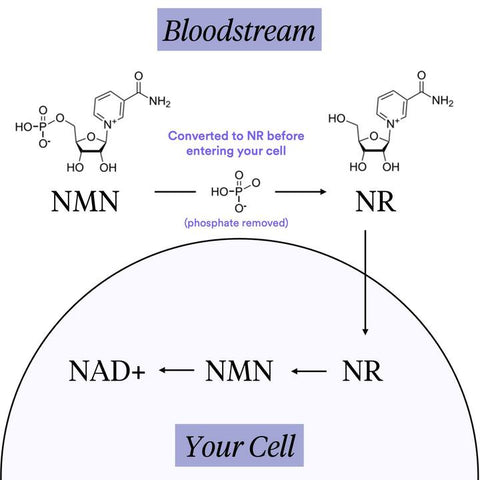
However, recent studies have shown that certain tissues have a specific transporter, Slc12a8, that allows NMN to enter cells directly and efficiently convert to NAD+. In these tissues, NMN can directly and rapidly contribute to NAD+ levels (R, R).
Conversely, NR, lacking the phosphate group, may need additional steps to convert into NMN and then NAD+. Yet, this pathway also efficiently supports the cellular NAD+ pool, making NR just as valuable. Both compounds effectively sustain and enhance crucial cellular functions through their support of NAD+ levels, albeit through slightly different pathways (R).
Additionally, NRHM and NRC are both salt forms of Nicotinamide Riboside, which enhances the stability and solubility of NR for use in dietary supplements. These forms ensure that the beneficial properties of NR are readily available, supporting energy metabolism and numerous other cellular processes efficiently.
Thus, both NR and NMN play indispensable roles in cellular health, each offering unique pathways to bolster NAD+ within the body.
What’s the difference between NMN, NRHM and NRC?
As we delve deeper into cellular health and longevity, understanding the critical role of NAD+ precursors becomes paramount. NMN, NRHM, and NRC stand out as key molecules in this field. Let's explore each compound's unique pathway to enhance NAD+ synthesis.
NMN (Nicotinamide Mononucleotide)
NMN is a nucleotide derived from ribose and nicotinamide. It is a precursor to nicotinamide adenine dinucleotide (NAD+), vital for cellular metabolism, energy production, and enzymatic processes.
Use: NMN is used in research and supplements to increase NAD+ levels associated with aging and metabolic health. It's believed to support cellular functions, including energy metabolism and DNA repair (R).
NRHM (Nicotinamide Riboside Hydrogen Malate)
NRHM is a salt form of nicotinamide riboside (NR), combined with malate. NR is a vitamin B3 derivative that also serves as a precursor to NAD+.
Use: NRHM is used similarly to NMN for boosting NAD+ levels but offers potentially better stability and solubility due to its formulation with malate. The malate component might confer additional metabolic benefits as it is part of the Krebs cycle (R).
NRC (Nicotinamide Riboside Chloride)
NRC, often referred to as NR chloride, is another salt form of nicotinamide riboside. The chloride is added to enhance the stability and solubility of NR.
Use: Like NMN and NRHM, NRC is used in dietary supplements to increase NAD+ levels in the body. It's particularly noted for its potential to improve cellular health, energy metabolism, and longevity. NR chloride is commonly used in scientific research and health supplements due to its effective NAD+ boosting properties and safety profile.
NMN, NRHM, and NRC are all critical precursors to NAD+, each with unique chemical structures and formulations that affect their stability, solubility, and bioavailability.
These variations in composition and use underscore their distinct roles in research and health applications. They all contribute uniquely to the maintenance of cellular vitality through NAD+ support (R).
NR vs NMN Molecule
So which molecule reigns supreme? Currently, the result is inconclusive. Both compounds have demonstrated the ability to increase NAD+ levels in humans and are generally considered safe for consumption (R).
Numerous human clinical trials have been conducted or are ongoing, examining the effects of NR and NMN on various aspects of human physiology and performance. For instance, NMN is flexing its muscles by supporting healthy insulin sensitivity in muscles and boosting aerobic capacity (R).
On the other hand, NR supplementation has shown promise in increasing NAD+ levels in the brain and reducing levels of inflammatory cytokines in the central nervous system (R. R).
It's important to note that while these initial findings hint at a treasure trove of health benefits from NAD+ precursors, more research is required to ascertain whether the benefits of NAD+ precursor supplementation vary across different tissues and contexts.
Why Do You Need NR and NMN?
NR and NMN are fantastic because they're the sidekicks of NAD+. And NAD+ is the hero of your cellular world – it's the “most valuable player” when it comes to metabolism (turning food into energy), keeping your DNA in perfect shape, activating sirtuins (those are like cellular guardians), and a ton of other essential metabolic tasks (R).
You might think you get plenty of NAD+ from your diet by eating foods with NAD+ precursors. And you're not wrong – NR and NMN do present in small amounts in various foods. But it would be quite the challenge to eat enough of anything to give your NAD+ levels a real boost.
In a fascinating study published in the prestigious journal Nature Aging, Janssens and their team delved into the metabolic secrets hidden in the muscle tissue of both young and older adults.
What they found was eye-opening. NAD+ became one of the most depleted metabolites in older adults, which echoes what earlier lab experiments had suggested. Interestingly, the older adults experiencing physical challenges had an even steeper decline in NAD+ levels.
On the flip side, older adults who were keeping active and hitting the gym were hanging on to NAD+ levels more in line with those of young adults. This confirms two things: NAD+ levels are closely related to your age, and increasing those NAD+ levels could be the secret to the fountain of youth.
The NR and NMN Conclusion
Whether it's NMN's quick cellular entry or NR's broad efficacy, both compounds play pivotal roles in enhancing cellular health. Their unique benefits ensure that regardless of your choice, your cells are getting the support they need to thrive.



